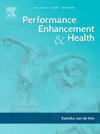解码无意使用兴奋剂:对体育运动中使用补充剂的复杂系统分析
IF 2.9
Q2 HOSPITALITY, LEISURE, SPORT & TOURISM
引用次数: 0
摘要
无意中服用兴奋剂是一个持续存在的问题,对运动员的职业和个人都有严重的影响。虽然这个问题是众所周知的,但在不同利益相关者在制造和管理非故意兴奋剂方面的作用方面,存在着关键的知识缺口。目前的研究旨在确定澳大利亚体育系统中与补充剂相关的有影响力的任务和利益相关者。在主题专家研讨会(n = 12)期间开发了分层任务分析(HTA),将体育“系统”中的补充使用分解为目标,子目标,操作和计划的分层结构。在中小企业研讨会期间,以HTA的第一级子目标为基础开发了一个任务网络。然后应用网络分析来确定系统任务和利益相关者的相互依赖性和影响。网络指标包括密度、外度中心性、内度中心性、间度中心性、接近度中心性和特征向量中心性。共确定了15个一级子目标,进一步分解为71个子目标和操作。运动员服用补品的总体目标是优化健康、表现、恢复、形象,并达到最佳体重。为了实现这一总体目标,需要完成许多任务,包括补充剂的研究、生产和监管,保持运动的清洁,运动员对补充剂的管理,以及随后对其功效的评估。该系统中最具影响力的任务包括反兴奋剂机构的“保持体育运动的清白”,以及保健品公司对保健品的“营销/广告”。系统中有影响力的利益相关者包括“反兴奋剂机构”、“运动员支持人员”和“赞助商”。分析表明,多个不同的利益相关者在防止非故意使用兴奋剂方面发挥着特定的作用。研究结果表明,为了防止通过服用补充剂而无意中服用兴奋剂,干预措施需要从通常关注运动员和运动员辅助人员转向更广泛的系统关注。本文章由计算机程序翻译,如有差异,请以英文原文为准。
Decoding unintentional doping: A complex systems analysis of supplement use in sport
Unintentional doping though supplement use is an ongoing issue that has severe professional and personal impacts on athletes. Though the issue is well known, there are key knowledge gaps regarding the role of different stakeholders both in creating and managing unintentional doping. The current study aimed to identify the influential tasks and stakeholders within the Australian sport system that are associated with supplements. A Hierarchical Task Analysis (HTA) was developed during a subject matter expert workshop (n = 12) to decompose the supplement use in sport ‘system’ into a hierarchical structure of goals, sub-goals, operations, and plans. A task network was developed during the SME workshop and based on the first level sub-goals of the HTA. Network analysis was then applied to determine the interdependency and influence of system tasks and stakeholders. Network metrics included Density, Out-degree centrality, In-degree centrality, Betweenness centrality, Closeness centrality, and Eigenvector centrality. In total, 15 first level sub-goals were identified which were further decomposed into 71 sub-goals and operations. The overall identified goal of athletes taking supplements was to optimise health, performance, recovery, image, and achieve optimal weight. Within this overall goal, numerous tasks are required to be performed including research, manufacturing and regulation of supplements, maintaining clean sport, to the administration of supplements by athletes, to subsequent assessments of their efficacy. The most influential tasks within the system include ‘maintaining clean sport’ by anti-doping authorities, and ‘marketing/advertising’ of supplements by supplement companies. Influential stakeholders within the system included ‘anti-doping agencies’, ‘athlete support personnel’, and ‘sponsors’. The analysis has demonstrated that multiple and varied stakeholders have specific roles to play in preventing unintentional doping. The findings suggest that for the prevention of unintentional doping through supplement use, interventions will need to shift away from the typical focus on athletes and athlete support personnel, to encompass a broader systemic focus.
求助全文
通过发布文献求助,成功后即可免费获取论文全文。
去求助
来源期刊

Performance enhancement and health
Social Sciences-Health (social science)
CiteScore
4.70
自引率
0.00%
发文量
27
审稿时长
57 days
 求助内容:
求助内容: 应助结果提醒方式:
应助结果提醒方式:


